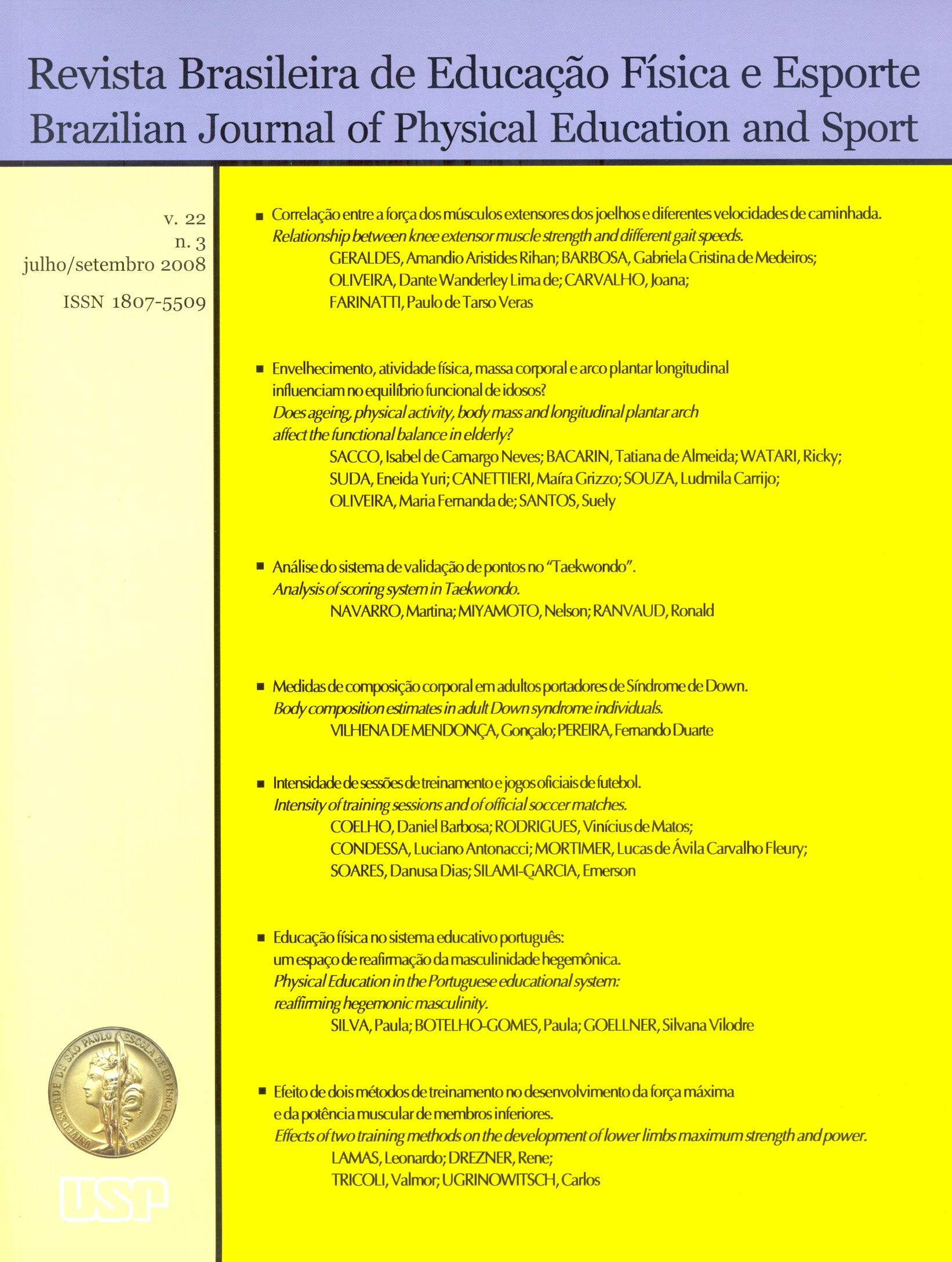Relationship between knee extensor muscle strength and different gait speeds
DOI:
https://doi.org/10.1590/S1807-55092008000300001Keywords:
Ageing, Exercise, Health, Physical fitness, GaitAbstract
The decline of muscle strength as a result of normal aging is reported to impair functional ability. However, the majority of the available research concerned frail older subjects. The purpose of this study was to examine the relationship between knee extensor muscle strength (KE) and gait performance in high fitness level elder women. Bilateral leg extension maximal strength (1 RM) was measured in 17 well-functioning and active women (68 ± 4 ys). Functional performance tasks consisted of habitual (HGV) and maximum (MGV) gait velocity assessed in 10 meters. The relationship between variables was observed by Pearson r and multiple regression or correlation (p < 0.05). The Pearson r showed significant association between KE and HGS (r = 0.49; p = 0.046). Similar results were observed in partial correlation where KE and HGV show β= 0.53 (p = 0.041), however there was no significant correlation between KE and both gait speeds considered simultaneously (R = 0.52; adjusted R² = 0.16; p = 0.11). In conclusion, the knee extensor strength is not associated with gait performance and therefore should not be used to estimate gait speed in active and highly fit older women.Downloads
Download data is not yet available.
Downloads
Published
2008-09-01
Issue
Section
naodefinida
License
Todo o conteúdo da revista, exceto onde está identificado, está licenciado sob uma Licença Creative Commons (CC-BY)
How to Cite
Geraldes, A. R., Barbosa, G. de M., Oliveira, D. L. de, Carvalho, J., & Farinatti, P. T. V. (2008). Relationship between knee extensor muscle strength and different gait speeds . Brazilian Journal of Physical Education and Sport, 22(3), 173-181. https://doi.org/10.1590/S1807-55092008000300001


